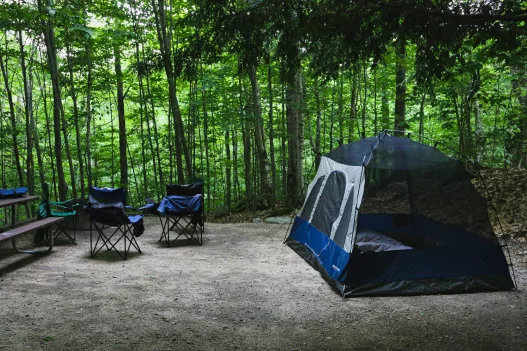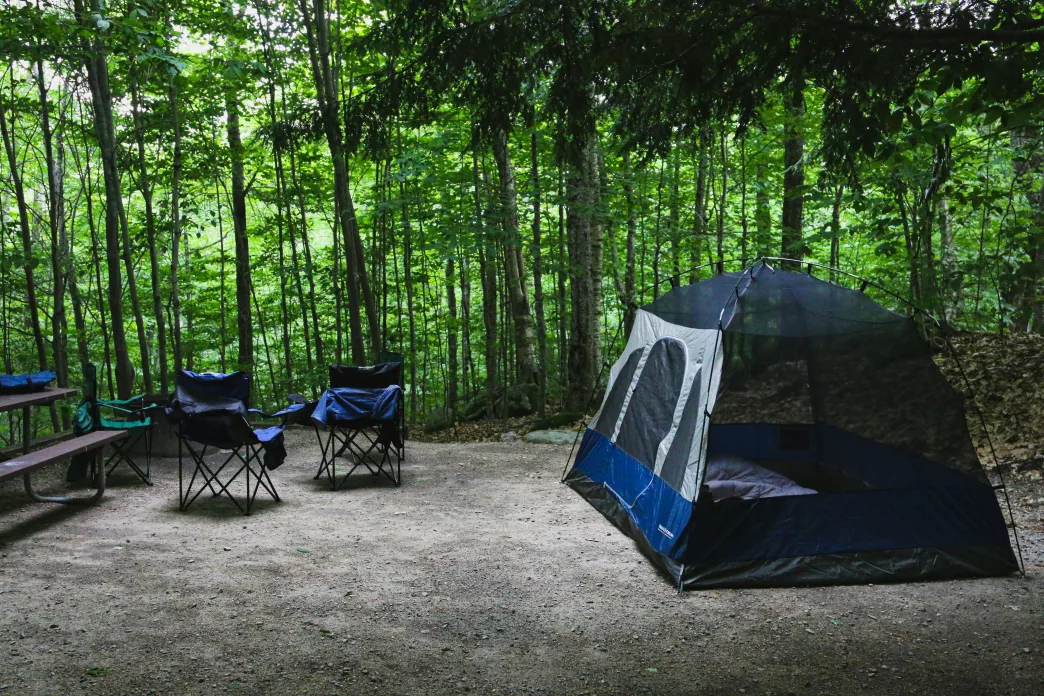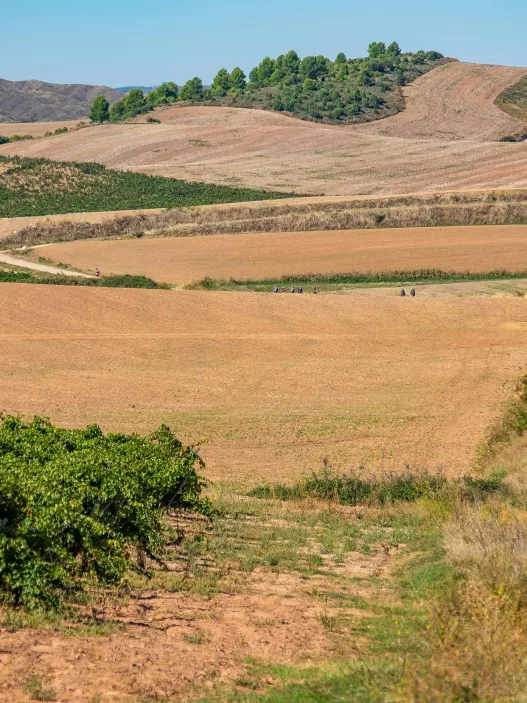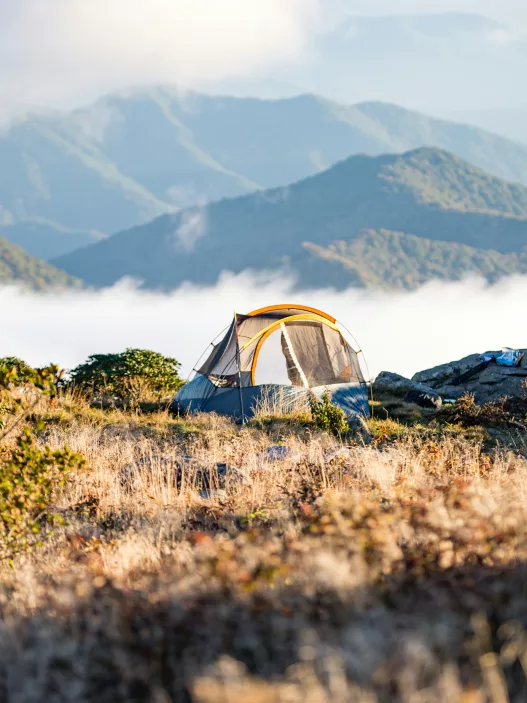Setting up a campsite can be an enjoyable yet daunting task for beginners. Learning the essential steps will simplify the process and enhance the overall experience. With the right guidance, anyone can create a comfortable and functional campsite that caters to their needs.
Understanding the key components of a successful campsite layout is crucial. This involves selecting an appropriate location, setting up a tent, and arranging cooking and relaxation areas. Each element plays a vital role in ensuring safety and comfort throughout the camping trip.
Equipped with practical tips and techniques, new campers can confidently approach their outdoor adventure. By following a step-by-step guide, they can avoid common mistakes and make the most of their time in nature.
Choosing the Right Campsite
Selecting an appropriate campsite is crucial for a successful outdoor experience. Important considerations include researching facilities, evaluating the surroundings, and adhering to environmental principles.
Researching Campground Facilities
Begin by examining the available facilities at potential campgrounds. This includes checking for amenities such as restrooms, showers, picnic tables, and fire pits.
It is also wise to confirm if drinking water is accessible. Many facilities will have details on their websites, or it is possible to contact them directly for clarification.
Additionally, consider the proximity of the campground to recreational activities like hiking trails, lakes, or rivers. Having access to such facilities can greatly enhance the camping experience.
Evaluating Terrain and Shelter
Assessing the terrain is vital for comfort and safety. Look for flat areas free of rocks and debris, which can be suitable for pitching a tent.
Consider the potential for flooding during heavy rains. Avoid areas near valleys or low ground where water might accumulate.
Shelter is another important factor. Trees can provide natural protection from elements like wind and sun, but look out for dead branches that may fall. Choose a location with natural windbreaks if possible, ensuring a wind-free space for camping.
Understanding the Leave No Trace Principles
Familiarising oneself with the Leave No Trace principles is essential for preserving natural environments. These guidelines aim to minimise human impact on the wilderness.
Key principles include packing out all trash and leftover food, staying on designated trails, and avoiding campfires in fire-restricted areas.
Choosing established campsites helps reduce erosion and habitat disturbance. It is important to camp at least 200 feet away from water sources to protect them from pollution.
Effective planning and adherence to these principles ensure a sustainable and enjoyable camping experience for all.
Preparing for Your Trip
Preparation is crucial for a successful camping experience. Gathering the right equipment and ensuring adequate food and water supplies will set the foundation for a comfortable adventure.
Essential Camping Gear List
A well-thought-out gear list ensures that nothing important is forgotten. The following items should be included:
- Tent: Choose a size appropriate for the number of campers.
- Sleeping bag: Select one suited for the expected temperature.
- Sleeping pad or air mattress: Provides comfort and insulation.
- Cooking equipment: Portable stove, pots, and utensils are essential.
- Lighting: A headlamp or lantern helps with visibility at night.
- First aid kit: Always have basic medical supplies on hand.
- Multipurpose tool: Handy for various tasks around the campsite.
- Backpack: Comfortable and spacious enough to carry all gear.
He or she should tailor the list based on personal preferences and trip duration.
Food and Water Essentials
Proper food and hydration are critical for enjoying a camping trip. Preparing meal plans in advance simplifies packing.
- Water: Aim for at least two litres per person per day. A portable water filter can also be helpful.
- Non-perishable meals: Consider items like pasta, rice, and canned goods for longer trips.
- Snacks: Bring lightweight options, such as trail mix or protein bars, for easy access.
- Cookware: A compact set of pots and pans can simplify meal preparation.
- Cooler or insulated bags: Useful for keeping perishables fresh for a few days.
Planning a specific menu can optimise the food selection and minimise waste. This preparation ensures meals are enjoyable and sufficient throughout the trip.
Setting Up Your Tent
Establishing a stable and secure tent is vital for a comfortable camping experience. The process involves selecting the right pitch, assembling the tent correctly, and ensuring it is secured properly against the elements.
Selecting the Tent Pitch
Choosing the right location for the tent can significantly influence comfort and safety. Look for a flat, dry area away from potential hazards like falling branches or flooding.
Avoid pitches near water sources, as they can attract insects and may become damp. If possible, select a spot that offers natural windbreaks, such as bushes or trees, to shield the tent.
Also, take note of the ground surface; soft earth or grass provides comfort, while rocky terrain can damage tent materials. Before setting up, clear any debris from the area, including sticks and sharp stones.
Tent Assembly Tips
Begin by laying out the tent components and familiarising yourself with the instructions. Most tents include a rainfly, poles, and guylines.
Assemble the poles first, following the specific guidelines for your tent model. Insert the poles into the corresponding sleeves or clips on the tent fabric.
Once the frame is stable, raise the tent by attaching the top of the poles. Make sure the tent is taut but not overly stretched, as this can compromise integrity. When using a rainfly, ensure it is secured over the tent with proper placement for optimal water runoff.
Securing the Tent
After assembly, securing the tent is crucial for stability. Stake out the tent by driving stakes into the ground at a 45-degree angle, ensuring they are secure and placed away from the tent walls.
Use guylines to further anchor the tent, especially in windy conditions. Attach guylines to the tent’s designated points and optimise tension for stability.
Regularly check the stakes and guylines throughout your stay, as they can loosen with shifting ground or weather changes. This ongoing maintenance is essential to keep the tent secure during your camping trip.
Creating a Comfortable Living Area
Establishing a comfortable living area enhances the camping experience. Proper organisation within the tent and the arrangement of outdoor spaces are essential for functionality and relaxation.
Organising Inside the Tent
To maximise space in the tent, create designated areas for sleeping, cooking, and storage. Use lightweight, compact furniture where possible.
Storage Solutions:
- Packing Cubes: Help keep clothing organised.
- Hanging Organisers: Provide easy access to small items.
Ensure the sleeping area is free of clutter to promote restful sleep. Use sleeping bags and mats that are suitable for the weather conditions.
Lighting also plays a crucial role. Battery-operated lanterns or fairy lights can create a warm ambience. Position these at eye level for optimal lighting without taking up floor space.
Arranging Outdoor Spaces
Outdoor areas should serve both functional and leisure purposes. Set up a cooking station away from the tent to avoid attracting wildlife. Use a portable camp stove and ensure proper ventilation.
Seating and Relaxation:
- Foldable Chairs: Easy to transport and set up.
- Blankets: Create an inviting space for relaxation.
Position furniture to take advantage of the view, ensuring that seating areas are sheltered from wind.
Create a fire pit area, if permitted, for warmth and cooking. Arrange logs or stones around it for safety and comfort. Efficient use of outdoor space can significantly enhance the camping experience.
Building a Campfire Safely
Creating a campfire is essential for cooking and warmth but involves important safety precautions. Proper planning in selecting the fire spot, building techniques, and fire management ensures both enjoyment and safety.
Selecting the Fire Spot
Choosing the right location for a campfire is crucial. Look for a flat, open area away from overhanging branches, bushes, and other flammable materials.
Consider the wind direction; avoid spots where smoke will blow towards your tent or campsite.
Check for local regulations regarding fire use in the area. If a fire pit exists, use it. If not, clear an area of a minimum radius of 3 feet of debris, ensuring a safe space for the fire.
Fire Building Techniques
To build a fire, start by gathering fuel. Use dry wood in three sizes: tinder (small sticks or dry grass), kindling (slightly larger sticks), and fuel logs (thicker pieces).
Arrange the tinder in a small mound and place kindling around it in a teepee shape. Once the tinder is lit, gradually add fuel logs to maintain flames.
Maintain the fire’s size; a small campfire is more manageable and safer than a large one.
Fire Safety and Extinguishing
Always have a fire extinguisher method ready. Keep a bucket of water or a shovel with sand nearby. This equipment can help control an unexpected flare-up.
Never leave the fire unattended, and only extinguish it when completely satisfied.
To extinguish the fire, pour water over the ashes and stir until cool. Ensure it’s cold to the touch before leaving the site.
Adhering to these safety measures can greatly reduce the risk of accidents during a camping trip.
Environmental Considerations
Setting up a campsite requires attention to environmental factors. Proper waste disposal and minimising ecological impact are crucial for preserving natural spaces.
Waste Disposal
Effective waste disposal practices are essential to maintain the cleanliness of the campsite and the surrounding area. Campers must ensure that all trash is packed and removed from the site. It is advisable to use reusable containers for food and other items to reduce waste generation.
For biodegradable waste, campers should use designated composting areas if available. Otherwise, they should pack out food scraps as they can attract wildlife and disrupt the local ecosystem.
A proper waste management system includes:
- Trash bags: Use sturdy, sealed bags for all waste.
- Recycling options: Identify nearby facilities for recycling plastic, glass, and metal.
- Leave No Trace Principles: Adhere to guidelines that emphasise leaving the environment as it was found.
Minimising Ecological Impact
Minimising ecological impact is vital for preserving the integrity of natural habitats. Campers should select established campsites when possible to prevent damage to vegetation. Setting up tents away from delicate areas like wetlands and wildlife habitats is important.
Campers should also be aware of their water usage. Using biodegradable soaps at least 200 feet away from natural water sources helps limit chemical runoff.
When cooking, consider using a portable stove rather than a campfire, as this helps reduce the risk of wildfires and protects soil and vegetation.
Key practices include:
- Stay on trails: Avoid creating new paths to protect plant life.
- Respect wildlife: Do not feed or approach animals to maintain their natural behaviours.
- Use natural materials: Gather firewood from the ground rather than cutting down live trees.
Following these practices helps protect the environment while enjoying outdoor activities.
Camping Safety and Hygiene
Ensuring safety and maintaining hygiene during a camping trip is crucial. Awareness of wildlife, personal health precautions, and camp hygiene practices can significantly enhance the camping experience.
Wildlife Awareness and Safety
When camping, it is essential to be aware of local wildlife. Animals such as bears, raccoons, and snakes can pose risks. It is advisable to store food securely in bear-resistant containers or high off the ground in a tree, away from the tent.
Making noise while hiking can alert nearby wildlife to a person’s presence, reducing the likelihood of surprising them. In areas with bear activity, carrying bear spray and learning how to use it can provide extra protection. Always respect wildlife by observing from a distance and never feeding them.
Personal Health and First Aid
Camping often involves physical activities that can lead to injuries. Carrying a well-stocked first aid kit is vital. Essential items should include plasters, antiseptic wipes, pain relievers, and any personal medications.
In addition, participants should know basic first aid techniques such as how to treat cuts, burns, and insect bites. Awareness of potential allergens and carrying an epinephrine auto-injector for severe allergic reactions can be lifesaving. Staying hydrated and using sunscreen can prevent health issues during outdoor activities.
Camp Hygiene Best Practices
Maintaining hygiene at a campsite is important for health and comfort. Setting up a designated hygiene area away from food preparation and sleeping areas is advisable. This site should include a portable toilet or a hole for a latrine.
Hand washing should be done frequently with biodegradable soap, especially before meals and after using the toilet. It is essential to pack out all waste, including toilet paper and sanitary products, to keep the environment clean. Keeping food sealed and stored properly will help prevent attracting unwanted wildlife and maintain overall campsite hygiene.
Breaking Camp and Leaving No Trace
Packing up a campsite requires attention to detail to ensure that the environment remains undisturbed. Proper dismantling of equipment and thorough cleaning up are essential steps in minimising impact on nature.
Dismantling Equipment
When dismantling camping gear, it is important to follow the manufacturer’s instructions for each item. Start with tents, taking care to remove all pegs and guylines. Once the tent is taken down, clean it to remove debris before packing it away.
Other equipment, such as hammocks and tarps, should be removed carefully to avoid damaging surrounding vegetation. Ensure that any gear used for cooking, such as stoves and pots, is also cleaned. This minimises food residue that could attract wildlife. Keep a checklist of gear to ensure nothing is left behind.
Cleaning up the Campsite
After equipment is dismantled, focus on cleaning the campsite. Inspect the area for any litter or personal items. Food scraps must be fully retrieved to prevent animals from being drawn to the site.
It is advisable to refill any fire pits with soil and ash, spreading it out to erase signs of a fire. Check for items buried in the ground or hidden under leaves, ensuring the area is as clean as it was found. Lastly, stick to designated paths when walking away from the site to avoid trampling on the flora. By following these steps, campers can leave the campsite in excellent condition for future visitors.









